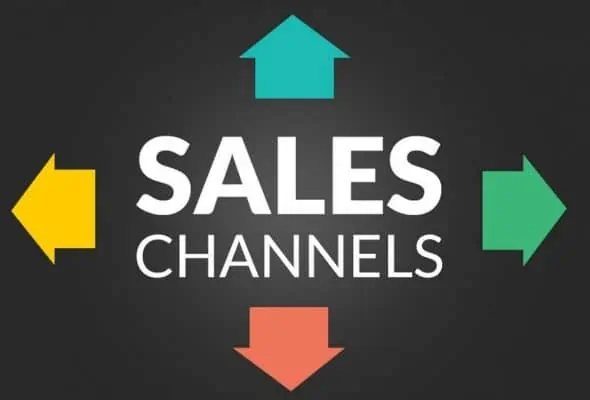
Sales channels are one of the most powerful tools in the ecommerce world. They are critical for boosting sales volume, but they help your brand remain competent and competitive in an increasingly complicated digital landscape. Leverage them to own every aspect of the customer experience—buying, returns, etc.—and reach end consumers in a way that makes a lasting impact.
But establishing a multichannel sales strategy takes a great deal of work—even in an ecommerce context. Today, 21% of marketers say that a lack of understanding of developing multichannel campaigns has kept them from leveraging a channel strategy.
Let’s look at the myriad sales channels available today, why you need them, what you need to get started, and how to establish a winning plan.
Types of sales channels
Modern businesses have dozens of platforms to grow their brand, from traditional channels to newer, sleeker options. Each track is used for a different purpose and has advantages and drawbacks. Here’s a look at some of the most popular channels:
Ecommerce. Ecommerce channels include almost any online storefront, from smartphone retail websites to online fashion shops. They’re easy to tap into, especially when companies like Shopify are powering their back end.
Traditional marketplaces. Third-party channels like Amazon, Etsy, and eBay are great examples of conventional channels. They’re straightforward to integrate with but sometimes very limiting with restrictive requirements.
Modern marketplaces. Modern or trendy channels like TikTok, Spotify, and Instagram capture the audience’s attention with newer features. These are great options for upselling and cross-selling, although they must constantly publish content to remain relevant.
Retail. Any physical storefront is an example of a retail channel. Unlike digital channels, you can bring your customers face-to-face with your product. However, it will likely be far more expensive than other channels.
Wholesale. Channels like Handshake allow merchants to sell bulk quantities of their products. This option keeps costs down while moving lots of inventory.
Resellers. If you repackage, rebuild, or otherwise affiliate yourself with third-party products, you will own a “reseller” channel. This fantastic sales option is both simple and cheap, although the legal guidelines surrounding reselling may be complicated.
White label. The term “white label” refers to sales channels that rely on printing your logo on generic products. While you can leverage white label channels for trendy products (think fidget spinners), this is a highly competitive channel.
Mobile apps. Sales made from mobile apps make up 10% of all retail sales in the United States. There are many opportunities here: it’s fast, convenient, and very flexible. But be warned—building an app is no cheap task.
Direct-to-consume. Fifty-five percent of customers prefer to purchase products directly from a brand (no middleman present). With this channel, you get all the profits from your sale, which builds your income faster. But keep in mind that all marketing and logistics costs fall in your court.
B2B sales. If your business sells to other companies, you’re a part of B2B’s $1.8 trillion sales channel. In this strategy, your likelihood of repeat customers is high. However, note that the sales cycle of a B2B channel is relatively long.
Partnerships. You can partner with individual companies or people to help promote your products (think influencers or sponsorships). This channel is perfect for building social proof, although it may sacrifice some of your profits.
Bear in mind that not all of these sales channels will be a good fit for your online business. Some may work better than others, while some may not work. It’s good to do plenty of research before choosing a platform.
Why use channel sales?

Channel sales may not work for every company, but they carry significant advantages over purely direct sales. The immense advantage is in affordable distribution.
By partnering with different sales channels, small companies can grow their businesses without the expenses of hiring and onboarding an in-house sales team. Larger companies can also use channel sales to better handle their sales by analyzing each channel instead of looking at all sales across their entire market.
Additionally, channel sales can create trust through product endorsement, increase revenue growth efficiency, and give customers access to product bonuses.
We now know the what and the why of channel sales. So, let’s look at how your business can create and manage them.
The case for multiple sales channels
Many new brands focus on a single sales channel in the initial stages of their operation. However, scaling a business requires a multichannel sales strategy that increases the chances of a customer interacting with your brand.
The benefits of having multiple sales channels are well documented:
Companies that maintain multiple sales channels can retain 89% of their customers. That’s nine out of every ten buyers!
Customers are 23 times more satisfied with brands that use multiple sales channels. This also enhances the customer experience, leading to repeat purchases.
The more integrative your sales channels are, the more customers are likely to spend. Research shows that customers spend 10% more with companies with multiple sales channels.
A heavily curated multichannel strategy has the potential to take your brand to the next level. By applying all best practices and creating room for agility, businesses can push their way to the top of the ecommerce ladder.
Making your ecommerce store a center of operations

Diversifying your ecommerce channels is a must for any successful strategy. However, your website should be at the center- not external media.
Whether you sell primarily through social media or a distributor like Amazon, optimizing an online store is critical to scaling sales over time.
Here’s why it’s so essential to make your ecommerce website the heart of your sales channel strategy.
- Simple to use
There’s no doubt about it: website stores are simple to use. More than 2.14 billion people expect to buy goods online in the next few years, many of whom are already familiar with the online checkout processes on ecommerce websites and online stores.
- Easy to build
Many online stores can be produced cheaply, knowledgeably, and at scale. Platforms like Shopify allow individuals and companies to drag-and-drop elements into a field to be published. You can also use your ecommerce site to direct people to other sales channels, including social media platforms or apps.
- Control restrictions
External sales platforms (those you don’t own) have strict requirements for listing or selling products. Internal platforms (such as your website) have far fewer. Easily record and sell whatever you choose, and add specific descriptions, product photos, or comment and rating systems that complement your needs.
- Express your brand
More than 70% of customers want personalized experiences with your business. Make your brand voice count by sprinkling delight into your images, copy, voice, and tone. Try using different fonts, colors, and styles that bring out the best of your brand and its values.
This example from Fashion Nova highlights the company’s fun personality without compromising other sales channels.
Delivering rich shopping experiences with modern marketplaces
Following trends with flexibility is key to maintaining a winning channel strategy. Traditional sales channels certainly have their place, but catering to your audience with modern alternatives puts you one step ahead of the competition.
TikTok is one such modern marketplace, allowing merchants to present their products to a massive audience. Consumers can shop directly from individual TikToks or purchase from live feeds or creator collaborations.
If your ecommerce brand is centered around music, you may want to consider selling on platforms like Spotify. You can quickly sell digital downloads, albums, and even physical records on individual band pages, which nets you sales while you sleep.
The “shop by picture” function via Instagram is a great way to turn branded pictures into salable content. This example from Red Dress Boutique highlights some of the brand’s highest-selling items and apparel options.
Note that not all modern marketplaces are a good fit for your business. It’s imperative to evaluate your options and ask good questions before investing in a channel that may benefit your brand.
Which sales channels are proper for you?
If you’re going to dive into channel sales, the first step is figuring out the purpose of your future sales channels. Don’t invest time and money in channel sales without a clear directive. Otherwise, those resources will go to waste.
Craft a statement of purpose for your partnerships, and make sure it aligns with your company’s overall values and goals. Once you identify your purpose, it’s easier to see what partnerships would benefit your company and which business model you should use.
There’s no one-size-fits-all approach to building a sales channel strategy. As you begin the process of narrowing down some sites and platforms, ask yourself:
What are your most profitable sales channels?
Where does your target audience prefer to shop?
How many sales channels can you feasibly manage?
Does your business model limit specific sales channels?
Will you need to hire subject-matter experts to address these sales channels?
Remember: slow and steady wins the race. Start small by building a modest list of channels, then continue to scale your strategy over time.
Conclusion
An essential element of any sales channel strategy is building up its beating heart—your ecommerce store. Do what you can to flesh out a central base camp on your website, then create individual sales channels that build onto your strategy.
You owe it to your customers to be flexible, lean, and adaptable. With a winning channel strategy by your side, your online store will have the capacity to reach more customers in even less time.

Pingback: Sales Channel Strategy - Eboxman - Dropship Success Tips